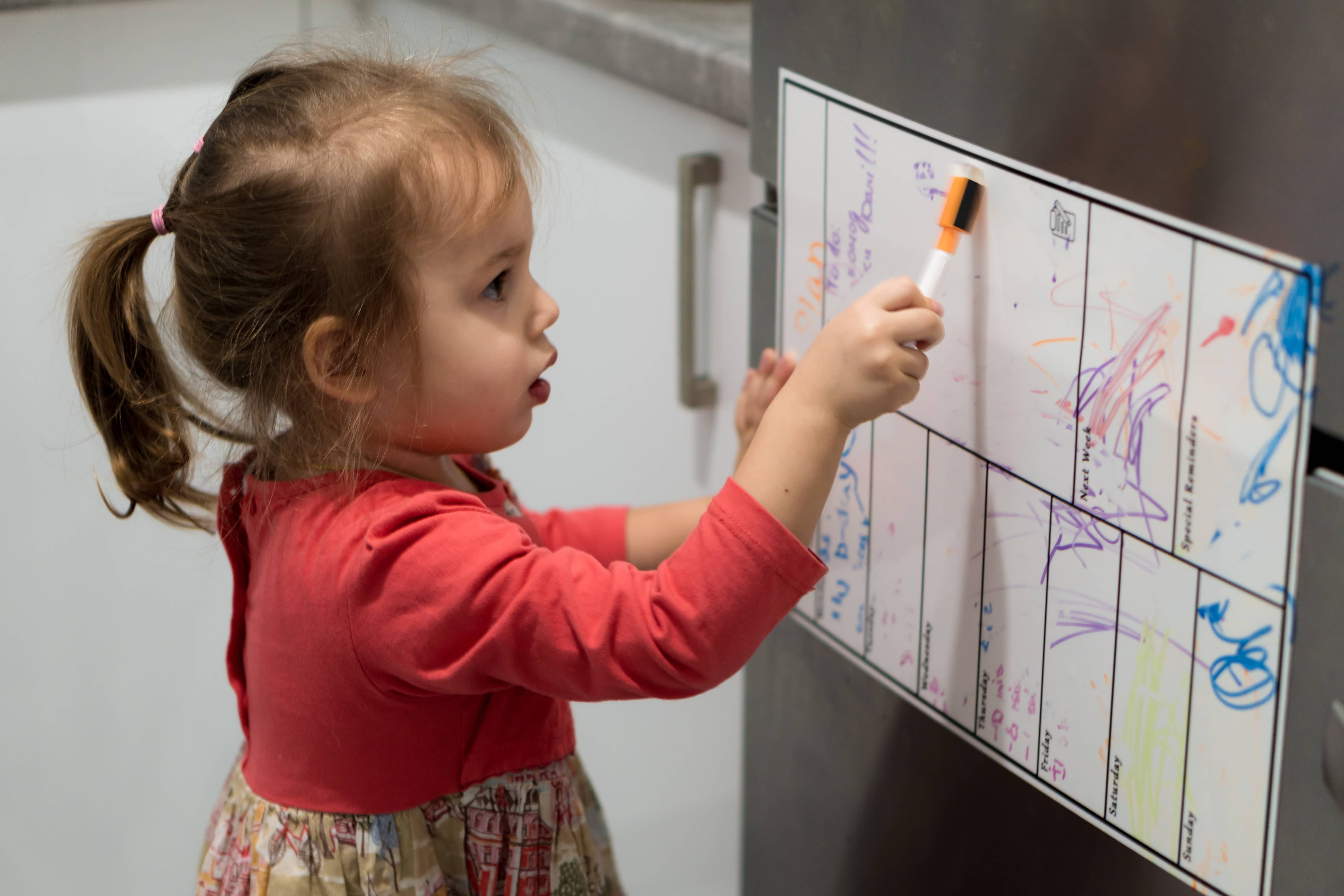You are probably familiar with the impatience of children of all ages. “Mommy, how much longer?” or “Daddy, why do we have to wait?” or “Can we go home now? I’m bored.”
These are just a few murmurings from an infinite well of questions coming from my little girl. Whether we’re at the grocery store, doctor’s office, or simply in the car driving, she lacks patience. But I don’t blame my little one… everything was instant when she was a baby! They cry, we come. They’re completely dependent on us. So it’s understandable when young children have difficulty waiting. After all, their brains are still developing.
Estimated reading time: 5 minutes
 And let’s face it, desires are a natural part of being human, so it’s perfectly normal for children to desire things. And sometimes, they desire them right now!
And let’s face it, desires are a natural part of being human, so it’s perfectly normal for children to desire things. And sometimes, they desire them right now!
However, it’s vital to teach children delayed gratification so they can cultivate patience. Yet, it’s equally important to encourage them to ask for what they need and pursue their interests, goals, and aspirations.
But what if children were patient in getting what they wanted?
Now, this question may seem farfetched if you’re a parent or guardian. You might have a child that doesn’t cope easily with change. Or you may have a child with relentless persistence and energy who struggles with accepting limits. "No" is not in their vocabulary. Of course, all children are unique. However, regardless of their temperament, all children CAN learn patience.
How would your life as a parent change? And how do you go about teaching your child patience? Can you make it worth their while to wait?
This brief guide will explain why patience is essential, and how you can teach patience to your children. But before we go further, let’s get on the same page.
What Is Patience?
The dictionary defines patience as “an ability or willingness to suppress restlessness or annoyance when confronted with a delay.” We develop patience—it doesn’t just appear at the drop of a hat. And everyone has to wait for things at some point, especially when things are out of their control. Thus, the importance of this trait.
Why Patience Is Essential for Children to Learn
All children will benefit from learning patience since everyone’s lives and experiences are intricately linked with needs and desires. My little one is no different. She may protest or cry about having to wait, but waiting is a normal part of life. Therefore, it’s vital for her to practice self-soothing that will allow her to behave appropriately. Imagine all the many situations throughout the day where children encounter delays requiring self-calming and patience:
Imagine all the many situations throughout the day where children encounter delays requiring self-calming and patience:
- Waiting for cookies to bake 😋
- Driving to daycare, school, or a long drive for vacation
- Settling down and quieting for a nap
- Grocery shopping with a parent
- Lining up for recess at preschool
- Waiting for their turn in the school lunch line
- Not speaking out of turn in class
- Sharing games and toys with their friends
No matter the situation, children must be able to grasp the concept of waiting while developing emotional regulation. Ultimately, patience can be a way of life. Waiting is inevitable!
Simple Ways to Teach Patience to Children
So, if you’d like to start modeling and teaching your child patience, don’t wait for the right place or time! Begin now! Use everyday experiences as opportunities to grow patience and water the virtue day by day.
Here are some helpful tips on making patience both fun and rewarding for children!
Always Start Small
A key in teaching kids delayed gratification is to require them to wait in small doses at a time.
No one can force a child to be patient so I decided to take it slow with my daughter. Whenever she wanted something like a snack or a doll, I would tell her to count to five. As she got better at counting and waiting, I would have her count to ten… and then twenty. (By this time, she was already going to school and had begun to understand the nature of waiting).
Look for daily scenarios where you can intentionally have your child wait. Begin by having them wait for only a few seconds. Once they get the hang of it, you can gradually increase the time. Once they understand the need for waiting and see that they are capable of waiting calmly, you can increase the wait time.
Provide Opportunities to Practice Patience
You know the old saying, “practice make perfect”? It’s true! Patience in children doesn’t happen overnight. Learning and developing patience needs to be exercised dozens—even hundreds—of times before it’s on autopilot. Provide slight delays throughout the day and let them self-calm and wait. Then reward them if there is no whining, tantrums, or impatience with a hug, smile, or affirmation. Appreciate them when they are successful.

Turn Waiting Time into Useful Activity
Another helpful tip is to teach your child to use the waiting time by focusing on something useful or interesting.
For instance, my five-year-old daughter and I had a routine in the morning. I would tell her I was making breakfast and that the food would be done once she got dressed. She would get dressed, and then, once she got downstairs, her breakfast was hot and ready for her on the table. Rather than her asking over and over if breakfast was ready, I had her do something else to help pass the time. In this case, I had her focus on another part of her morning routine.
Every family has daily routines that make our lives easier. Routines help a child know what to expect. Make patience into a routine! Have them practice patience regularly to get used to it just like getting accustomed to a routine. Provide opportunities for them to be patient while fixing their lunch, before giving them a toy, or turning on the TV. Each time you do, they’ll get better at it!
Stay Cool and Calm
Yes, I have had my share of stressful moments. When my child would cry about having to wait, I would try my best to look at her with a smile of encouragement. I knew that yelling at her wasn’t wise.
Sometimes, children will want instant gratification. They might start whining or crying when they have to wait, but do your best to stay calm. Empathize with them.
Model for them by staying cool and calm, and then, maybe, they’ll become calm as well.

Be Consistent and Creative
What if we as parents made waiting more fun and desirable for our children? Perhaps they would learn patience more readily.
When asking your child to wait, get creative with helping them stay calm. For instance, instead of telling my daughter that lunch will be ready in five minutes, I’d have her count with magnets on the fridge. Or you can have your child do jumping jacks, tell a story using items they see in the kitchen, or draw a picture of their feelings.
These activities build coping skills and make waiting more interesting. This way of practicing patience is excellent for when you and your child are waiting to be seen at the doctor’s office. My daughter would bring her box of crayons and a coloring book with her so that she could pass the time.
She would sometimes ask, “How much longer?” I would tell her, “Color a page,” meaning that if she focused on coloring an entire page of her coloring book, the wait would soon be over. This trick worked ninety-nine percent of the time! Acknowledge Your Child’s Patient Behavior
Acknowledge Your Child’s Patient Behavior
Affirming your child when they are patient goes a long way to encourage more of the same behavior. Kids crave attention, so acknowledging them is a great way to give positive attention and reinforce the desired behavior. Sometimes as parents, we’re too busy trying to improve our children’s behavior, and it’s easy to forget to shine the light on their efforts, progress, or what they do well!
Conclusion
Ultimately, it’s never too early to teach a child how to be patient. There are many opportunities to teach patience to your child. Do it in small doses. Make waiting a fun experience! And, as always, keep a cool head, and never give up!
We hope that this brief guide helps you teach your child about the importance of patience.
Parents, we wish you and the fam the best!
And if you'd like customized parent coaching and support to build your parenting skills, Heartmanity is here to help! Email us: support@heartmanity.com.
If you'd like to reach the author, Sara can be reached at Academized, a research paper service.







